The final recommendation from the IES/WWC Practice Guide reminds us that all of our decoding efforts are a means to an end: comprehension. As teachers, we must ensure that each student has multiple opportunities to read connected text every day to support their reading accuracy, fluency, and comprehension. (To read previous blog posts in this series, please see the links at the end of this post.)
The Practice Guide suggests the following practices:
- Model strategies, scaffold, and provide feedback to support accurate and efficient word identification as the students read orally.
- Teach the students to self-monitor their understanding of the text and to self-correct word-reading errors.
- Provide opportunities for oral reading practice with feedback to develop fluent and accurate reading with expression.
Students need multiple opportunities to practice their word identification skills in connected text. The Practice Guide suggests that students practice in connected text while they are still learning the alphabetic principle and decoding. In the early sets of Being a Reader small-group instruction, the students begin reading connected text as soon as they have a few letter-sound correspondences and sight words. All of the controlled-vocabulary (hybrid) texts in Sets 1–5 are designed to support readers in practicing their newly learned decoding skills, while still encompassing components of quality literature, including natural sounding language and engaging and attractive illustrations and photographs. When the students encounter the book We Can Read in Set 1, they have learned sight words only, yet they are able to read a full book with natural sounding language patterns to support their comprehension.
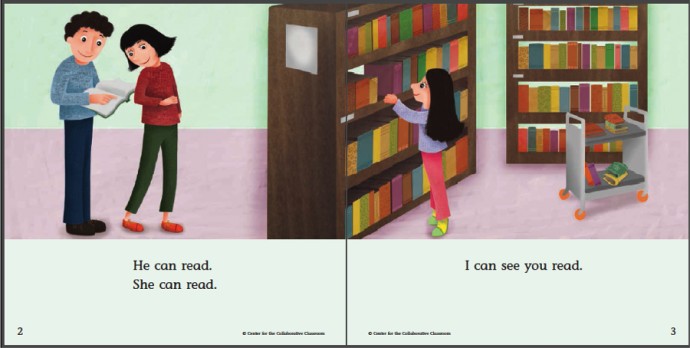
In a few weeks, the students begin applying their letter-sound correspondences as they have now learned their first vowel sound and can begin decoding and blending using that sound. In the book Nan and Sam, students practice combining their sight word knowledge with their CVC word knowledge to read a full text.
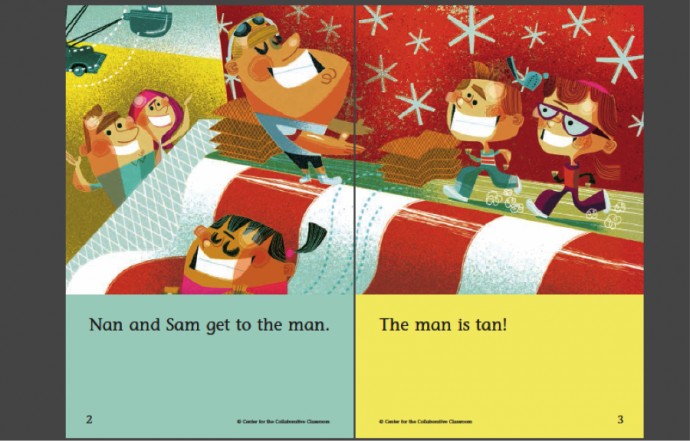
In order to become the readers we want our students to be, they must be able to self-monitor their understanding of the text and self-correct errors. We know that some readers have difficulty self-correcting because they are not attending to their own reading and considering whether or not their reading makes sense.
In Being a Reader Set 5, teachers are given support for noticing and assessing students’ self-corrections. Notice the correction procedures in place to support the students who may not be attending to whether or not their reading makes sense.
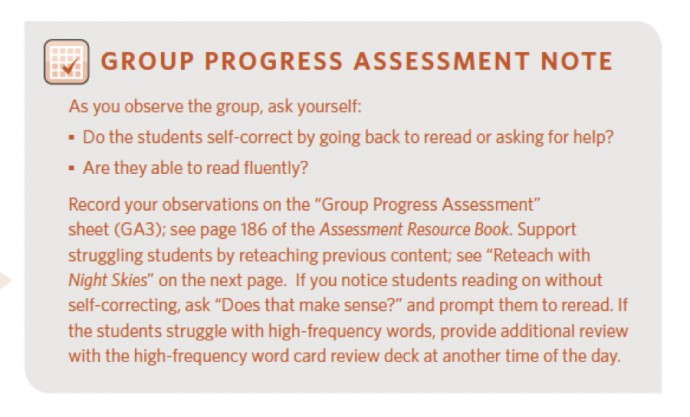
In addition to support for self-correcting in small-group reading, during Making Meaning Individualized Daily Reading (IDR) time, mini-lessons support teachers in helping their students understand the role of self-monitoring while reading individually. Consider the anchor chart below:
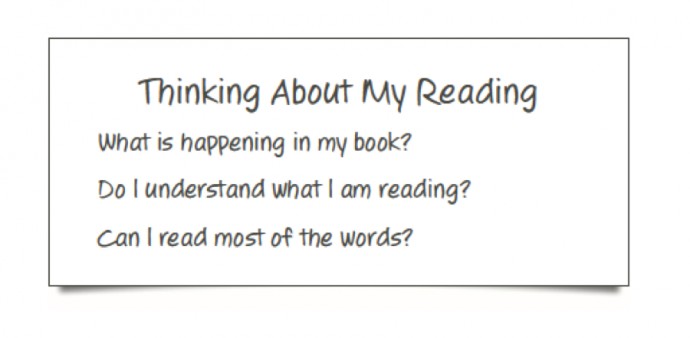
Finally, our students must have ample opportunities for reading practice with feedback from proficient readers in order to develop their fluency and accurate reading with expression. When we understand that fluency involves so much more than rate, we are able to support our young readers’ comprehension.
This begins early in Being a Reader with shared reading experiences. Through shared reading, our youngest students have the opportunity to hear fluent reading and practice those familiar texts by choral reading and echo reading. Teachers also use shared reading to support their students in their exposure to a wide variety of texts.
For example, first grade students are introduced to the book This Little Chick. On the first day, the students listen to it read aloud twice and discuss what they learn from rereading a text. On the second day of instruction, the teacher asks the students to read the text chorally. Notice how the teacher points out the pattern in the text and how it changes.
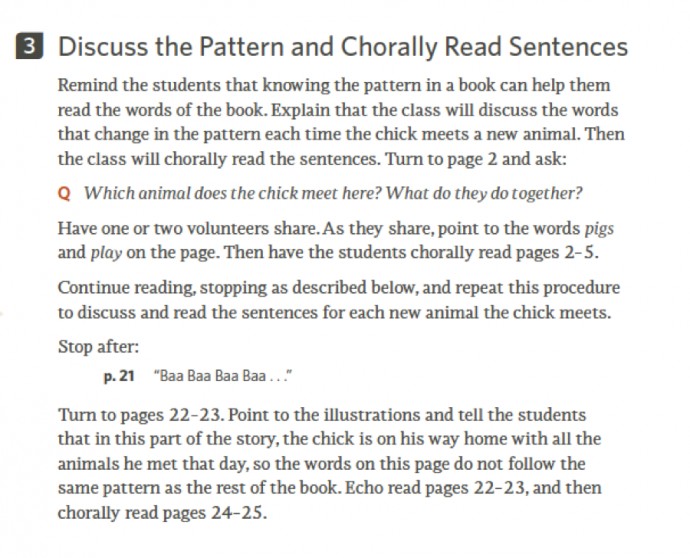
Once the students have discussed the pattern, they reread the text again chorally and discuss how the pattern in the text helps them as readers. This allows all students, even those who are not yet decoding at this level, to engage in fluent reading of connected text.
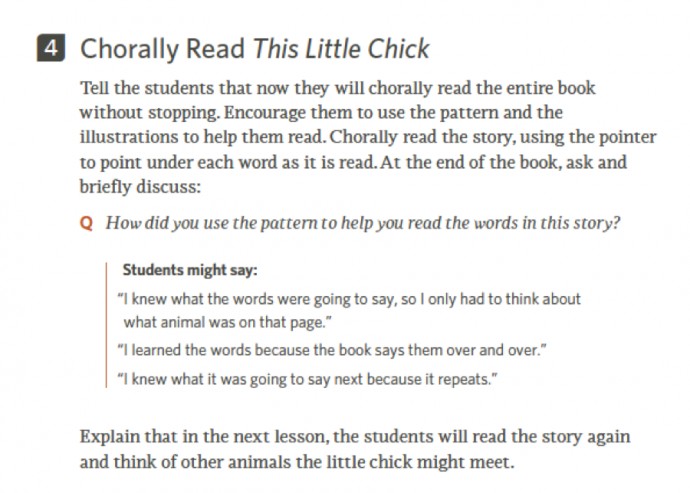
While some students develop prosody and other aspects of fluent reading naturally, others need more directed support. Within Being a Reader, Set 6 was specifically developed to help students who need more directed support in fluency. The texts used are familiar to the students who used them in prior instruction, but now the students work directly on phrasing, using punctuation to support meaning and text features. Note the instruction below where the students are using a familiar text to group the text into meaningful phrases.
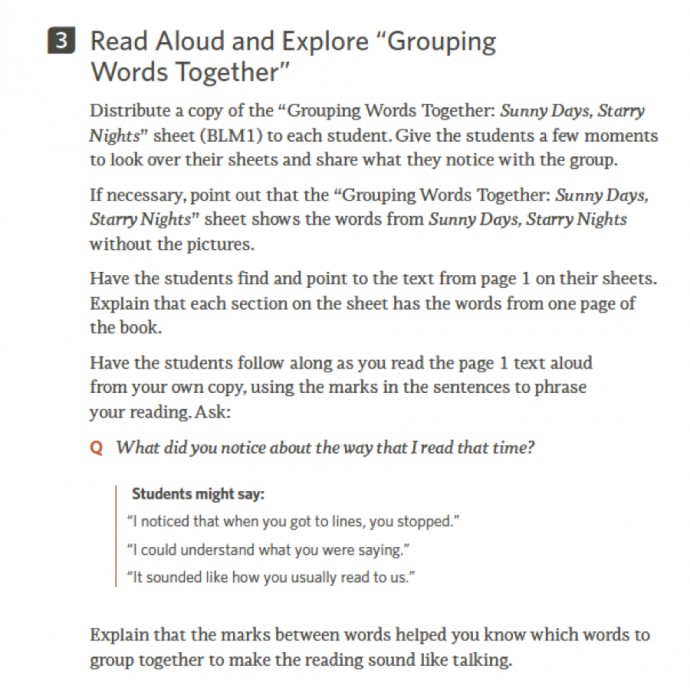
The recommendations from the IES/WWC Practice Guide help us consider what is most important in our teaching of young readers. The companion guide to this publication is Improving Reading Comprehension in Kindergarten Through 3rd Grade and is helpful as we consider how we can continue to help our young readers understand that reading is so much more than saying the right words out loud.
Follow the links below to revisit our discussion of the Foundational Skills to Support Reading for Understanding in Kindergarten Though 3rd Grade Practice Guide. Thank you for continuing to grow with us.
